Invisible Colors
When we were looking at the spectrum of white light (the rainbow) we noticed that we cannot see any colors beyond violet or red, but there are actually colors there. Special instruments and special photographic film can detect them. Besides ultraviolet and infrared there are many, many other colors of light. Maybe you have heard of “radio waves,” “X-rays,” and “gamma rays.” All those are invisible colors. Astronomers have developed telescopes that can see in all of these colors, and we are learning much more about the universe this way. Some animals can see these invisible colors too, and beings on other planets might have eyes that could see colors that are invisible to us. Let’s look at some pictures that relate to invisible colors:
DIGITAL EFFECT: Invisible Colors
Cycle through image sets for colors invisible to the human eye.
Visuals 7–21 are arranged to illustrate the “invisible colors,” first from UV to X-ray, then from IR to Radio. Format for each “color” is:A well known, everyday example of a device that uses the invisible color.An instrument that detects the invisible color.An astronomical image produced by such an instrument, with the aid of a computer.
VISUAL 7 (still): Ultraviolet——Suntan

UV rays cause suntans and sunburns. Here we see a person sunbathing, getting a tan. The ultraviolet light that comes from the Sun is responsible for giving us tans. The atmosphere, in particular the ozone in the atmosphere, filters out most of the ultraviolet light from the Sun. Visible light doesn’t go through clouds very well, but ultraviolet can go through clouds. That’s why we can still get sunburned on a cloudy day—we use sunscreen to filter out ultraviolet light before it reaches our skin.
VISUAL 8 (still): UV SDO—artist rendition of the Solar Dynamics Observatory (SDO) spacecraft.
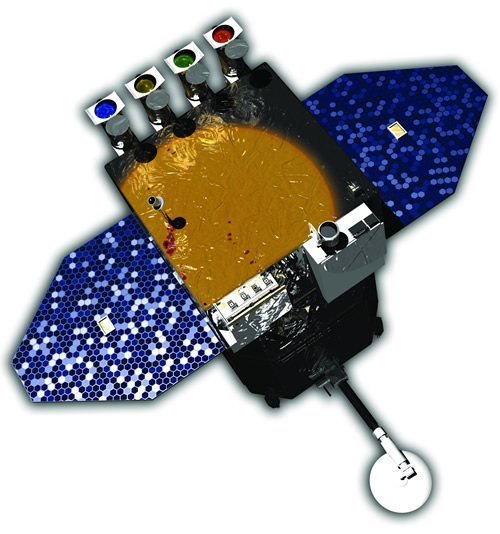
Because the atmosphere filters out a lot of ultraviolet rays, in order to have a clearer view of space in ultraviolet light we need to have ultraviolet observatories up in space, above the atmosphere. This is the Solar Dynamics Observatory (SDO), and it has an ultraviolet instrument it uses to study the Sun.
VISUAL 9 (still): Sun in UV
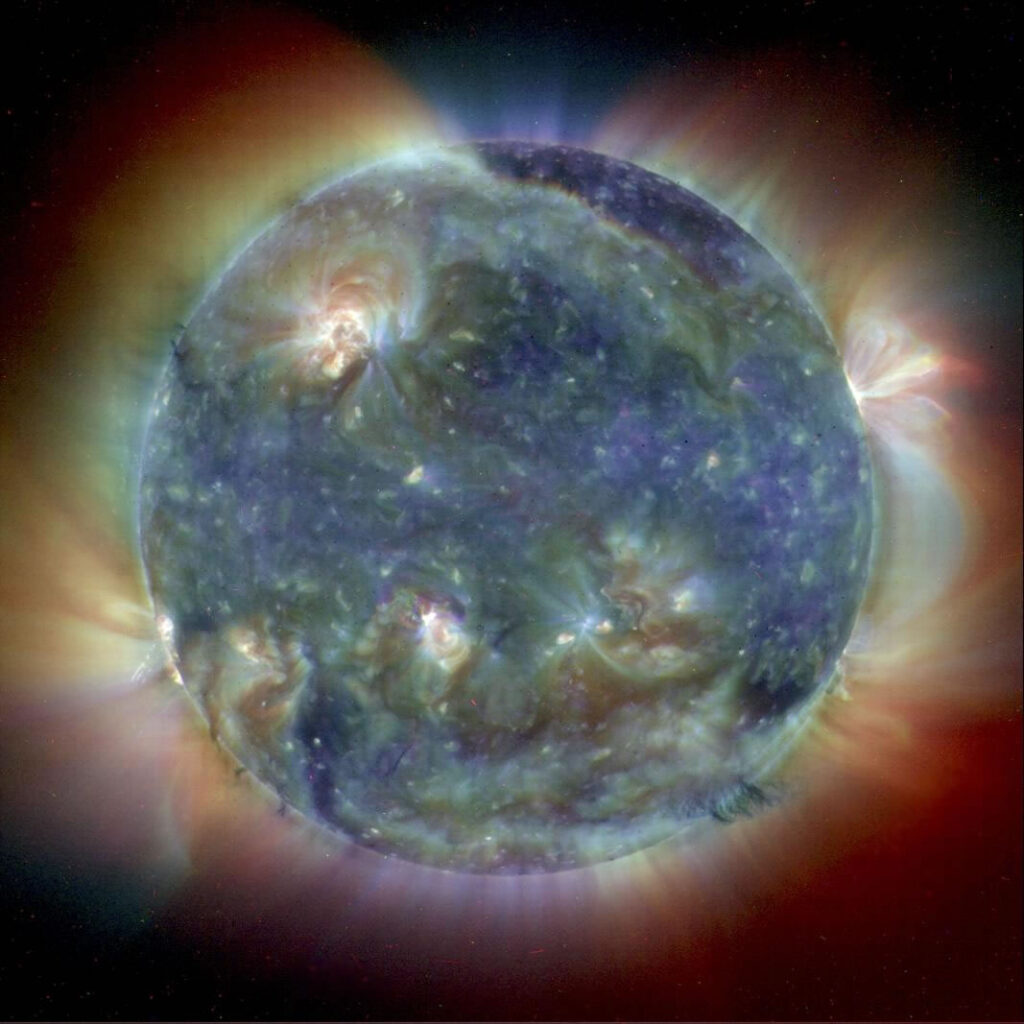
Here’s a picture of the Sun in ultraviolet light. Remember, we cannot see ultraviolet with our eyes. This image is processed by a computer using familiar colors to indicate different shades of ultraviolet.
Fade off all UV images.
VISUAL 10 (still): X-ray of a hand
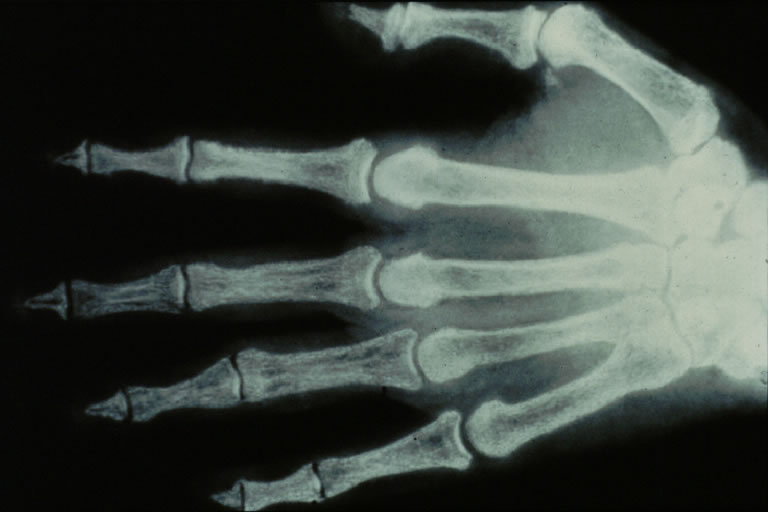
You may have seen a picture like this before.
What is it? [An X-ray.]
The X-ray is another invisible color and it can go through some things that visible light cannot.
Can X-rays go through air and through flesh? [Yes.]
That’s why the flesh of the hand doesn’t show. But bones can filter out X-rays better and they leave their “shadow” on the X-ray-sensitive plate.
VISUAL 11 (still): NuSTARR satellite artwork.
There are many sources of X-rays in the universe but they are hard to “see” through the atmosphere. The Nuclear Spectroscopic Telescope Array is the first orbiting telescopes to focus light in the high energy X-ray range. This allows us to study various phenomena, such as the remnants of exploded stars and black holes.
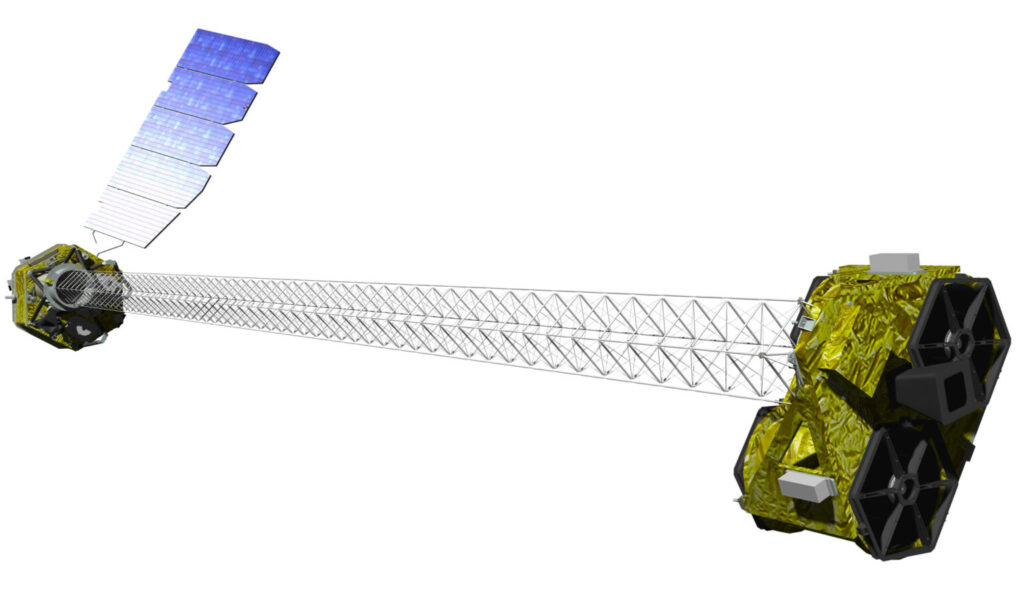
VISUAL 12 (still): Cassiopeia A supernova remnant, X-Ray view.
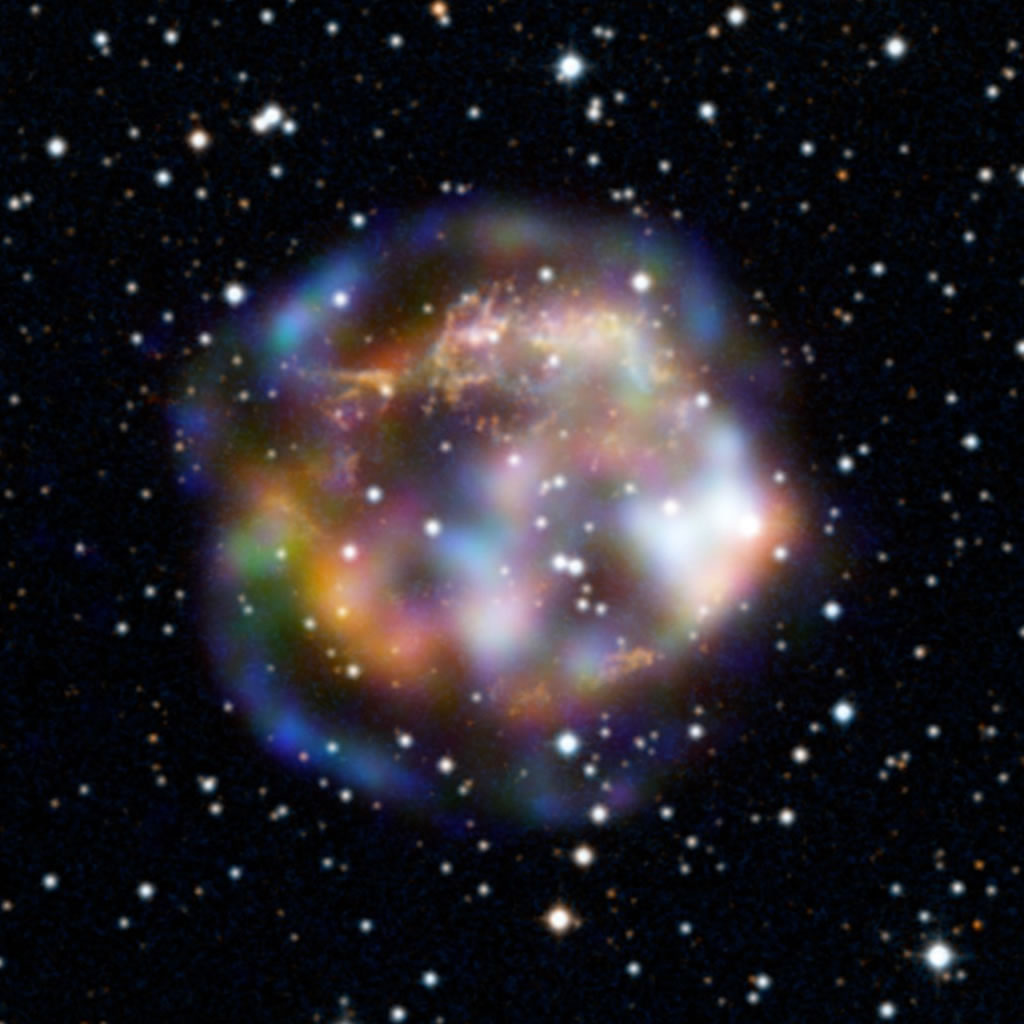
This color-coded X-ray image shows the supernova remnant Cassiopeia A, located 11,000 light-years away. The blue portion indicates high energy X-ray light. The outer blue ring is where the shock wave from the supernova blast is slamming into surrounding material, whipping particles up to within a fraction of a percent of the speed of light. Observations like this help add one more piece of the puzzle to teach astronomers how these particles are accelerated to such high energies. This is an example of an object in space that gives off very little visible light, but a lot of X-rays. Those would be invisible to our eyes, but are detectable with instruments to tell a larger story.
Fade off all X-Ray images.
VISUAL 13 (still): Electric Heater
Show a hand being warmed by a space heater to illustrate infrared radiation.
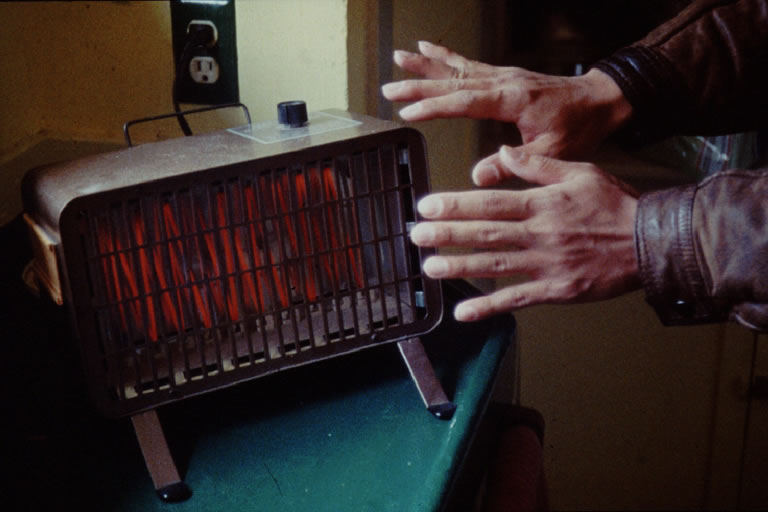
In many homes there are devices that produce a lot of infrared rays, plus some visible red or orange.
What is this? [A heater.]
Infrared is another invisible color that our eyes can’t see but we can feel. Infrared feels like heat.
Water is an excellent filter to infrared radiation. Infrared rays that come from space are stopped by water molecules in the air. Infrared observatories must therefore be at high altitudes so they are above most of the moisture in the atmosphere.
VISUAL 14 (still): WISE
Show an artist rendition of the Wide-Field Infrared Survey Explorer (WISE) satellite.
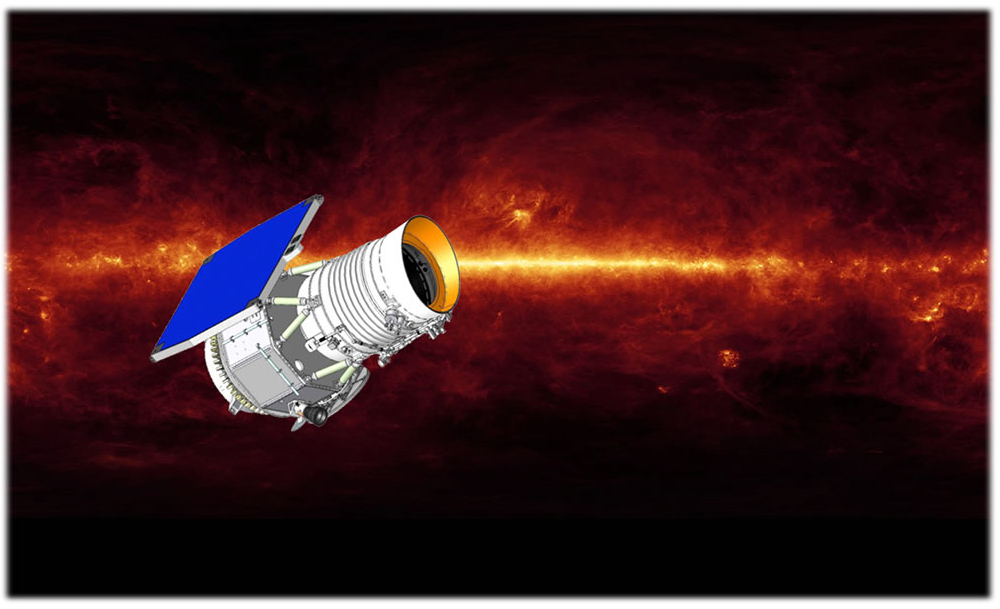
You probably suspected this, too: infrared observatories in space. How much higher can you get? Well, we probably could get higher but it wouldn’t make much difference since this telescope, the Wide-Field Infrared Survey Explorer (WISE), is above all of the water vapor in the atmosphere.
VISUAL 15 (still): IR Scan of Milky Way
Show a WISE all-sky image of the Milky Way galaxy in infrared.
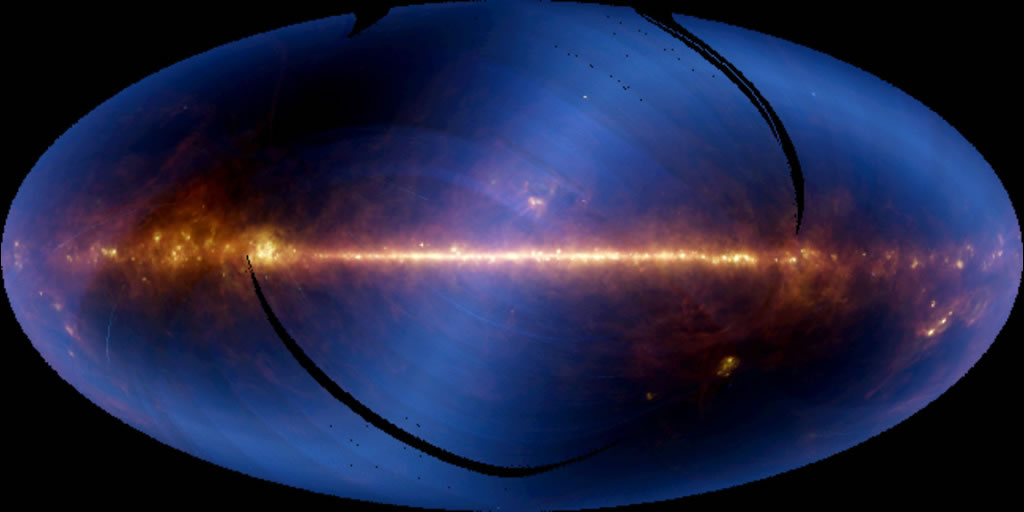
Fade off all infrared images.
DIGITAL EFFECT (optional): IR Sky
If available on your system, show the infrared sky. This can be used to illustrate what the whole sky would look like if humans had infrared-sensitive eyes.
VISUAL 16 (still): Microwave Oven

Alright! Another household item!
What is this? [Microwave oven.]
Microwaves are another invisible color!
Did you know that you can cook your food by shining some colored light on it?
Microwaves are right next to radio waves in the electromagnetic spectrum.
VISUAL 17 (still): Radio Towers
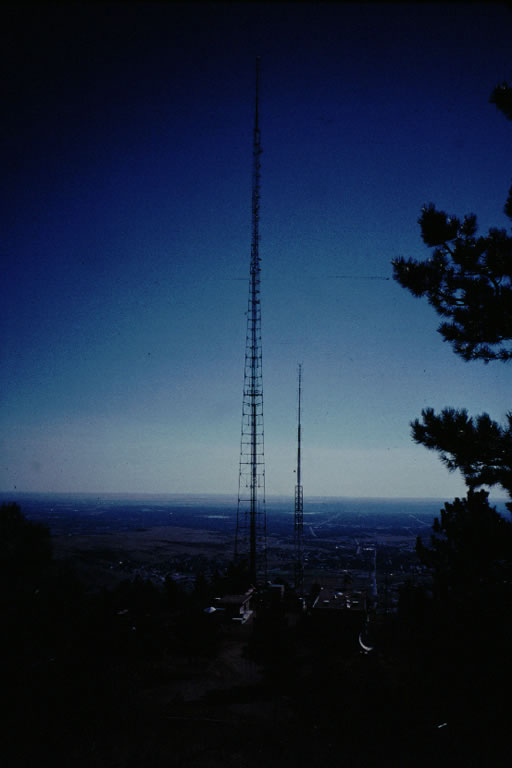
Microwaves are really a special form of radio waves which we can use for communications. These radio towers can have rock music blasting all around by sending it in the form of radio waves.
VISUAL 18 (still): Radio Telescope—Very Large Array (VLA).

A radio dish antenna can be used to receive radio waves from space. Is rock music what we’ll hear when we point our radio telescopes at space?
VISUAL 19 (still): Radio Crab Nebula still image in radio.
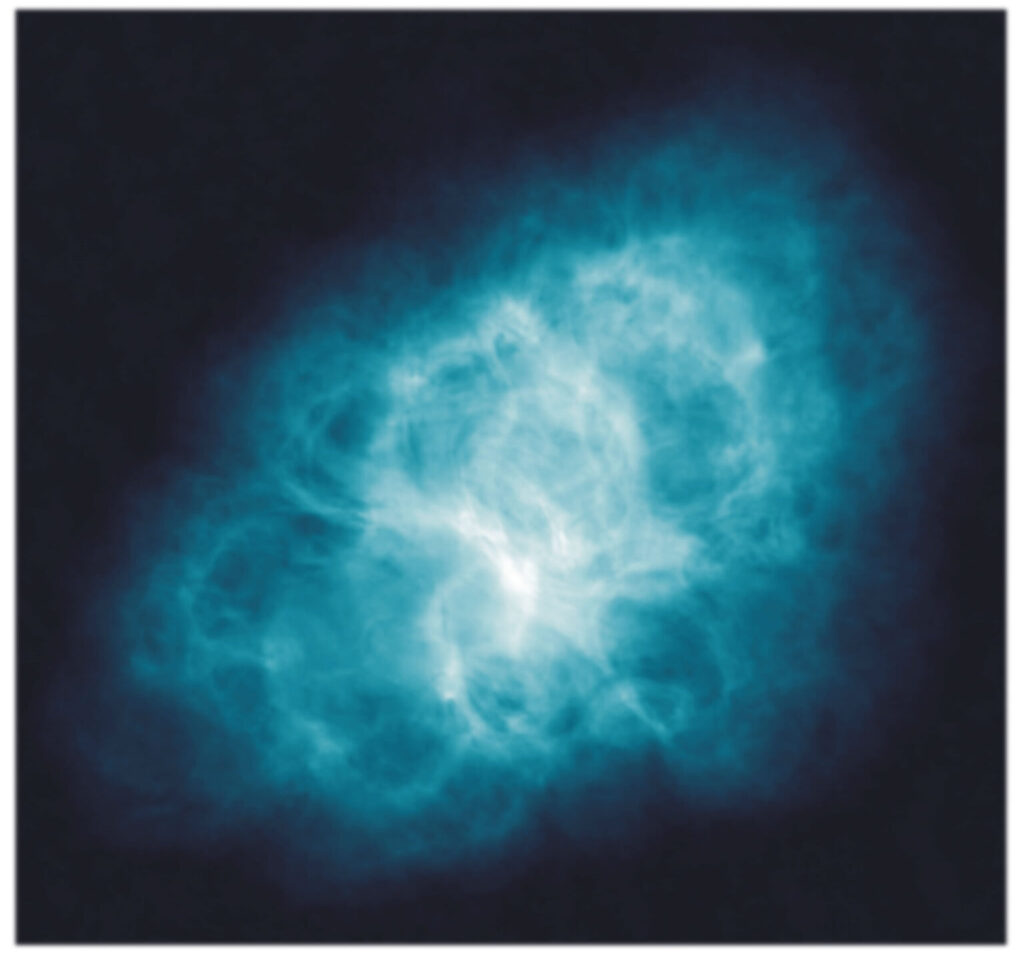
Nope! No alien rock stars yet. This is a picture of another supernova remnant, known as the Crab Nebula, in the constellation of Taurus. The supernova occurred in 1054 AD, and was observed by ancient Chinese astronomers and Native American sky watchers. The nebula is roughly 10 light-years across, and it is about 6,000 light-years from Earth. The supernova explosion left behind a rapidly spinning core, known as a pulsar. The pulsar generates a highly energetic “wind,” which energizes the material originally thrown off by the star in the supernova explosion. This, in turn, causes the nebula to emit the radio waves seen in this image.
Fade off all Radio Wave images.
DIGITAL EFFECT (optional): Microwave Sky
If available on your system, show the microwave sky. This can be used to illustrate what the whole sky would look like if we had microwave-sensitive eyes.
DIGITAL EFFECT (optional): Gamma Ray
If available on your system, show the gamma ray sky, as another example of an invisible color wavelength astronomers study. This can be used to illustrate what the whole sky would look like if we had gamma ray-sensitive eyes.
So astronomers make use of the entire electromagnetic spectrum to study the Universe. If we only looked in the visible part of the spectrum—the tiny fraction that human eyes can perceive—we’d be missing a lot!
VISUAL 20 (movie): Solar Flare in Multiple Wavelengths as seen by multiple spacecraft.
In this case, we are looking at a solar flare event that was observed by three different spacecraft. Each spacecraft had its own suite of instruments tuned to observe the Sun through multiple filters. It starts out with a wide-angle view of the Sun, and then zooms into the flare event, and then back out the to see the expanding bubble of energy that results from the flare. The different colors we see correspond to different filters being applied to the view. We see the event in visible light, X-rays, ultraviolet, and more. It is only by putting together all the filtered imagery that we are able to build a complete picture.
Optional (for older students)
We’ve said that we can look at space in the invisible ultraviolet with the help of instruments. But some objects in space are natural detectors of ultraviolet light, converting it into visible light that we can see through “normal” telescopes. This is the case with red-glowing nebulae, called “emission nebulae.”
[Discuss fluorescence with the audience.]
VISUAL 21 (still): Trifid Nebula
Turn on a dome-sized image of the Trifid Nebula. Can optionally be used as a “summary” of the entire show, illustrating emission, reflection, and absorption in a single image. Examples of emission, reflection, and absorption within the Trifid Nebula may be pointed out by the presenter.
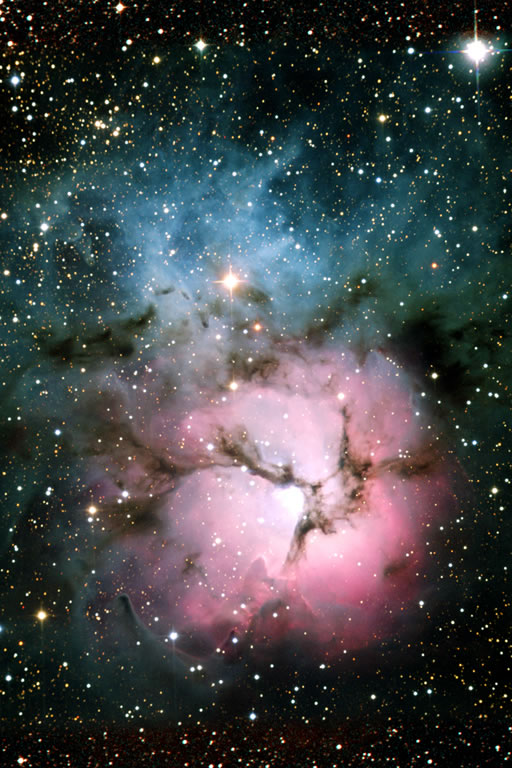
Nebulae are clouds in space, made of mostly hydrogen. There are three types of nebulae: red, blue and dark. The red colored gas clouds are not actually being illuminated by red light from nearby stars; they are being illuminated by ultraviolet light which they absorb and convert into red light. This process is called fluorescence. A gas that can make this conversion is hydrogen. Red nebulae are mostly made out of hydrogen. Astronomers found this out by analyzing their light. With what? [Diffraction gratings, of course!] The blue nebulae are made mostly of dust and hydrogen. They are not fluorescent. They get visible light from nearby hot stars. The dust reflects the light, especially blue, which we can see. These are called “reflection nebulae.”The dark nebulae are made mostly of dust that stops the light coming from stars on the other side. Some nebulae appear white because they give off several colors at the same time. Fade off Trifid Nebula image.
DIGITAL EFFECT (optional): M42 All Sky Orion Nebula
Show a full dome image of the Orion Nebula. Can be used in addition to, or in place of, the Trifid Nebula image. Like above, the presenter should point out examples of emission, reflection, and absorption within the nebula.

